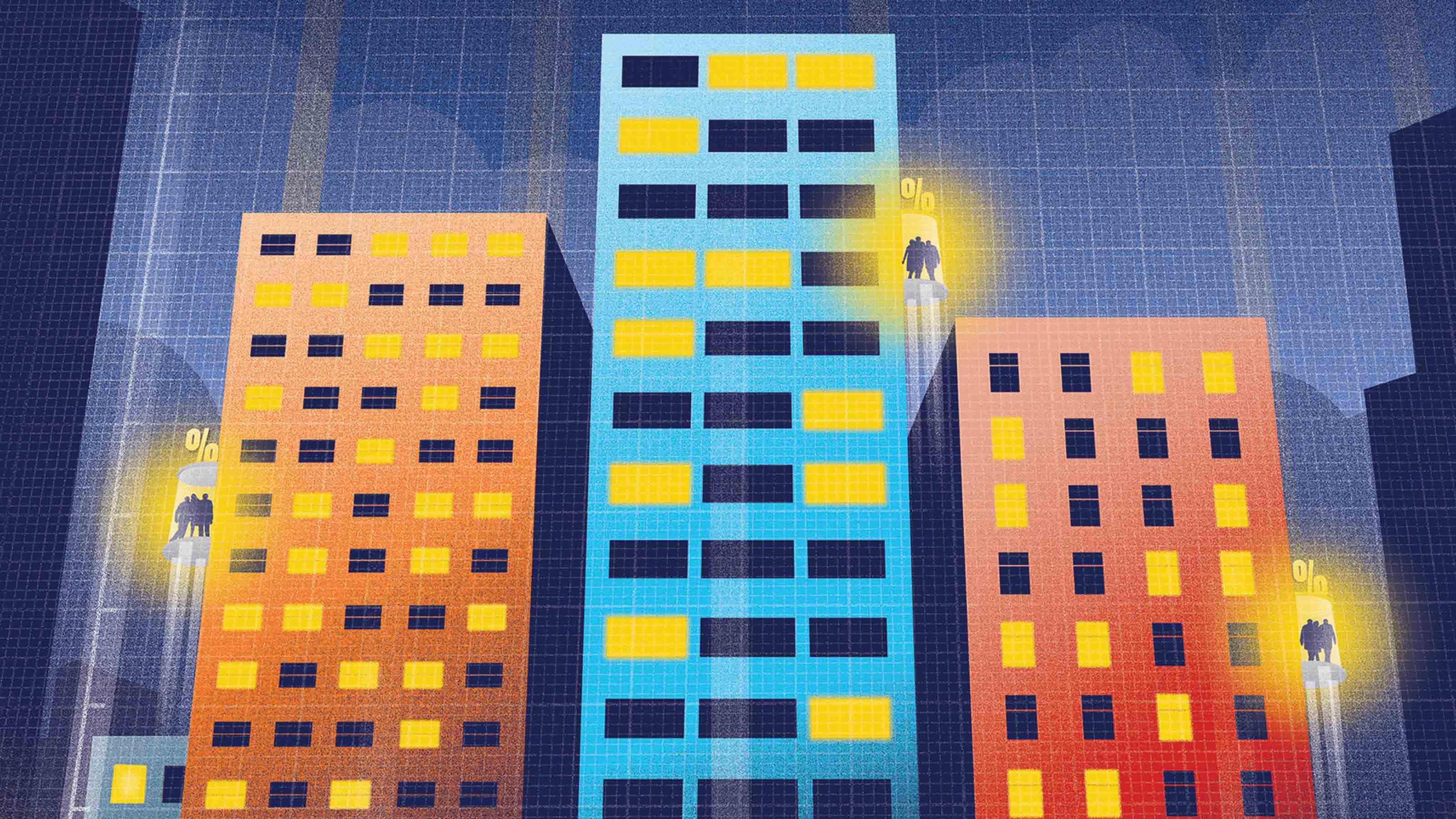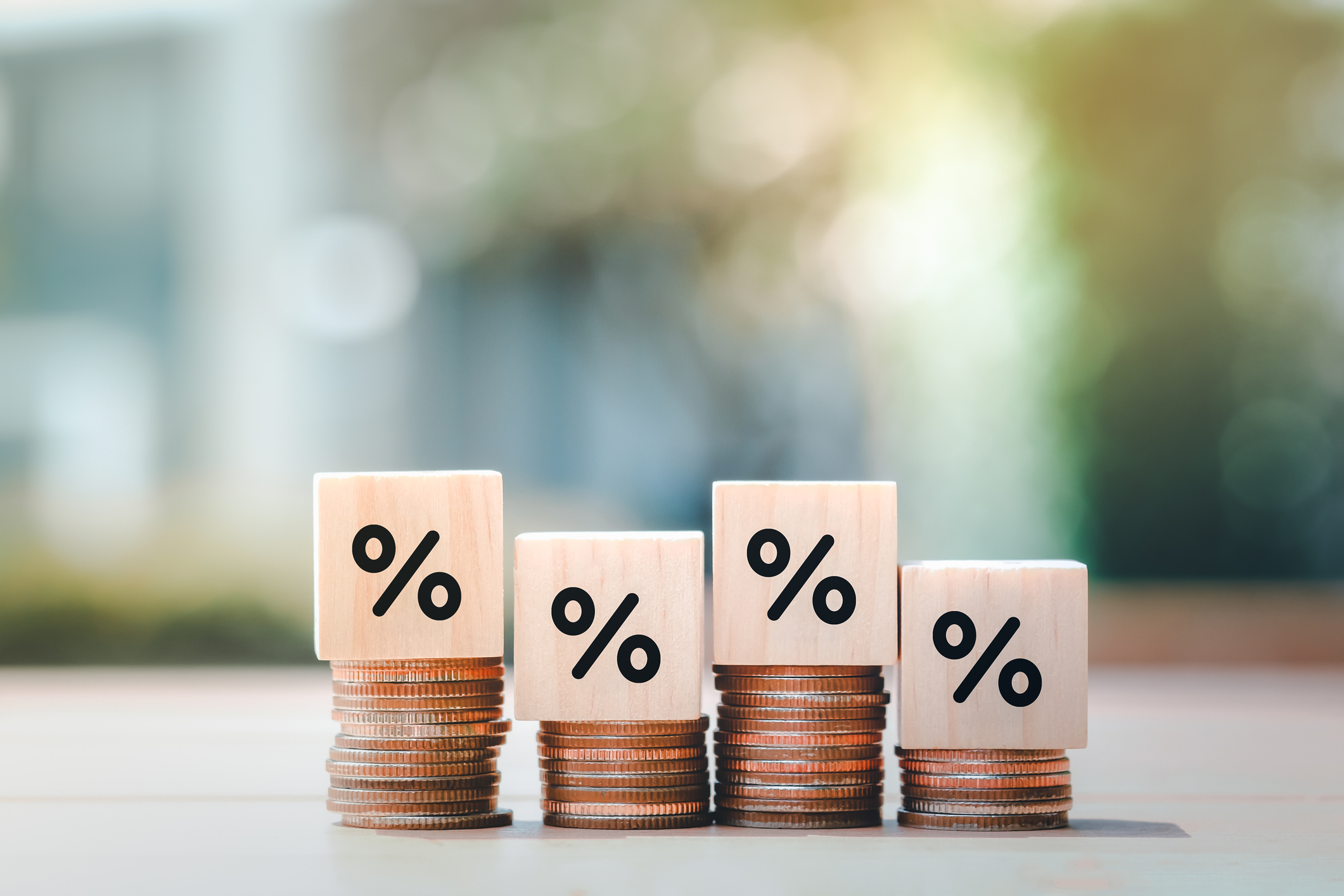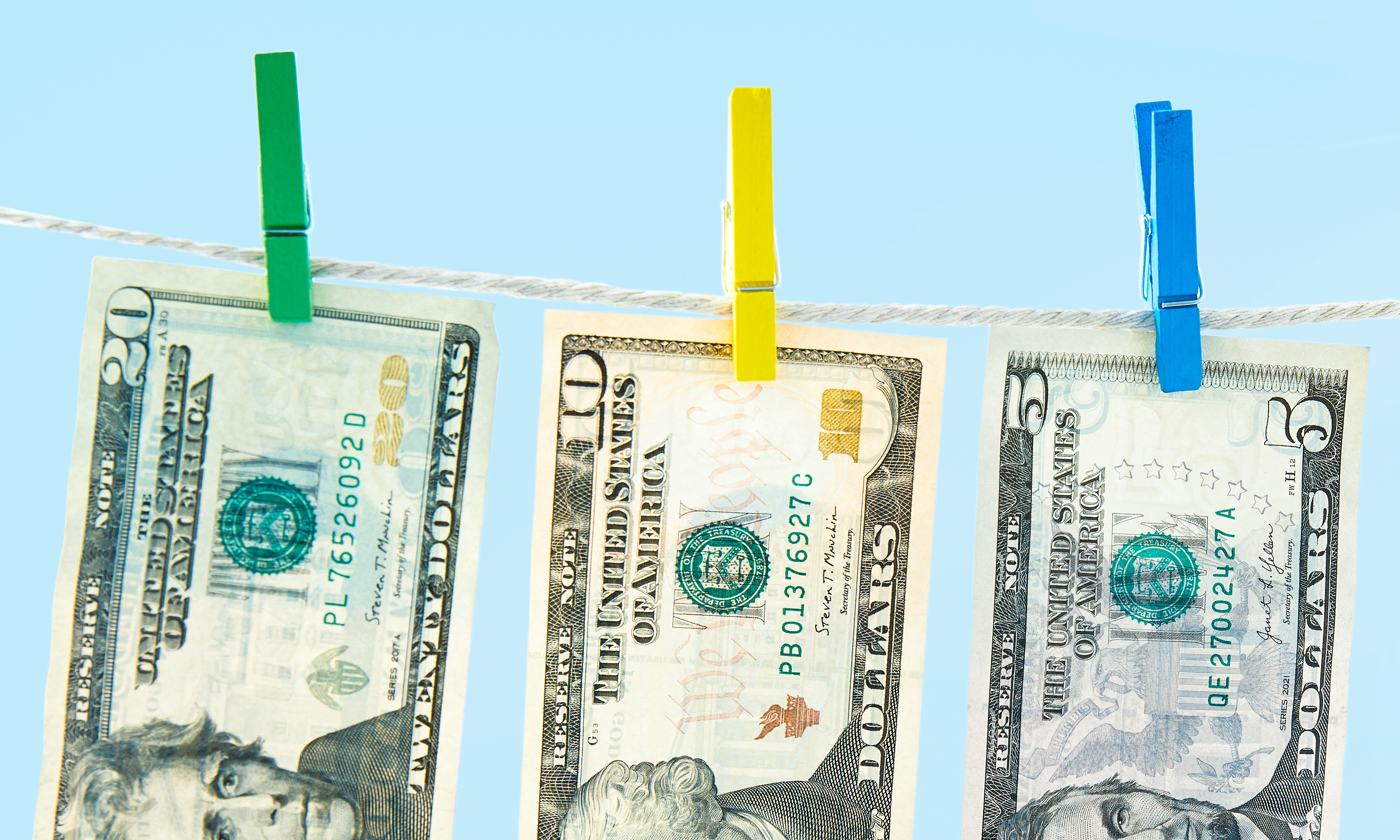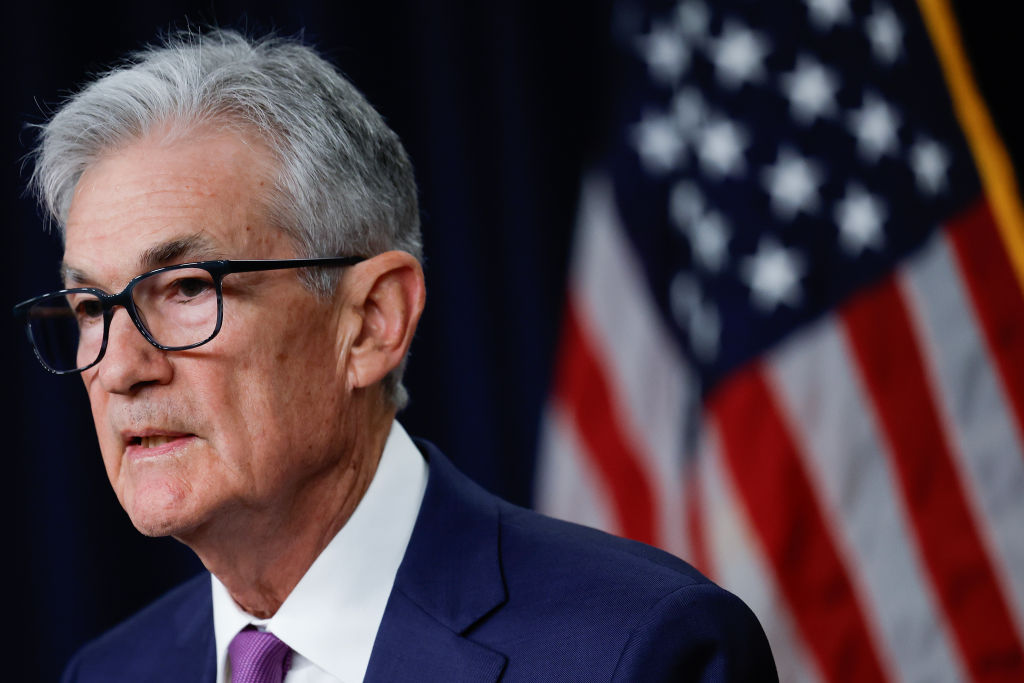Long-Term Rates Will Edge Higher
Yields on bank savings accounts will stay low. Home mortgage rates will remain affordable.


When the Federal Reserve signaled in June that it expects to raise short-term interest rates by the end of 2023—sooner than an earlier forecast—the response was immediate and fierce. The Dow Jones industrial average dropped more than 800 points, and the price of the 10-year Treasury note also dropped, increasing the yield to nearly 1.6%. Rates on 30-year mortgages rose above 3% for the first time since April.
The backdrop to all this worrisome news was rising inflation, which prompted some to recall the dark days of the early 1980s, when the Fed raised interest rates sharply to curb it. Back then, home buyers were lucky to lock in a 30-year mortgage for less than 12%.
But something strange has happened in the weeks since the Fed announcement: 10-year Treasury note yields have fallen back, and with them, rates for 30-year mortgages. As of July 15, the average rate for a 30-year mortgage was 2.88%.
From just $107.88 $24.99 for Kiplinger Personal Finance
Become a smarter, better informed investor. Subscribe from just $107.88 $24.99, plus get up to 4 Special Issues

Sign up for Kiplinger’s Free Newsletters
Profit and prosper with the best of expert advice on investing, taxes, retirement, personal finance and more - straight to your e-mail.
Profit and prosper with the best of expert advice - straight to your e-mail.
Economists attribute the lull in mortgage rates to several factors, ranging from worries about whether the rise in the COVID-19 Delta variant could curb economic growth to a growing consensus that the inflation spike is a short-term phenomenon. “Investors are buying into the idea that a lot of the very strong inflation figures are due to transitory factors,” such as slowdowns in supply deliveries, says Matthew Speakman, an economist for real estate website Zillow.
Still, interest rates will eventually head higher (although nowhere near what we saw in the 1980s). Kiplinger is forecasting that the 10-year Treasury will rise to 1.8% by the end of 2021 and 2.3% by the end of 2022. The average rate for a 30-year mortgage is expected to rise to 3.3% by the end of 2021 and move up to 3.8% by the end of 2022.
That means home buyers, who are dealing with limited supply, probably don’t need to scramble to lock in a rate (see How to Win in a Red-Hot Housing Market).
Short-term interest rates, which determine rates on credit cards and home-equity lines of credit, are expected to remain near zero through 2022. That’s good news for borrowers—assuming they can get a loan. Several major banks, including Wells Fargo, JPMorgan Chase and Citibank, halted new home-equity lines of credit during the pandemic and have yet to resume their offerings.
Credit card issuers, on the other hand, are eager to sign up customers, particularly since many borrowers used their stimulus checks or savings on canceled vacations to pay off balances during the pandemic. Credit card rates are still much higher than rates on other loans—the average rate is about 16%—but many issuers are looking to entice new customers by expanding their rewards programs (see New Perks From Our Best Rewards Cards).
No relief for savers. Meanwhile, the only good news for savers is that rates on savings accounts, certificates of deposit and other safe parking places probably won’t fall any more, says Ken Tumin, founder of DepositAccounts.com. The average rate for bank online savings accounts is about 0.45%, and major brick-and-mortar banks are paying even less than that. Locking up your money in a CD won’t boost your yield: The average rate for a one-year CD is just 0.17%, and you’ll get only 0.31% on a five-year CD, according to Bankrate.com.
It’s not just interest rates that are keeping yields low, Tumin says. The personal savings rate soared during the pandemic as consumers lowered their spending and banked their stimulus checks for a rainy day. In the first quarter of 2021, bank loans accounted for only about 58% of deposits, says Tumin, down from 69.5% in 2020. That indicates banks have plenty of money to lend and will be in no hurry to raise rates to attract more deposits, even after the Fed hikes short-term rates.
There are steps you can take to earn a higher return on money you can’t afford to lose. Some high-yield rewards savings accounts offered by local banks and credit unions offer rates as high as 5%. The trade-off is that they typically cap the amount of deposits eligible for the high rate and require you to meet certain criteria, such as using the institution’s debit or credit card a certain number of times each month, having your paycheck direct deposited, and conducting all of your business online. For example, Consumers Credit Union (Illinois) pays 4.09% on up to $10,000 if you spend at least $1,000 a month on one of its credit cards, have direct deposit and meet other requirements.
Another option for money you don’t expect to need right away is a Series I savings bond. The composite rate on Series I bonds issued through October is 3.54%. The rate consists of a fixed rate—currently 0% on new bonds—and an inflation rate, which is based on the government’s consumer price index and adjusts every six months from the bond’s issue date (see Earn 3.54% With Series I Bonds).
A big raise for seniors
Inflation can be particularly tough on retirees who are living on a fixed income, but the recent price spikes have an upside. The Kiplinger Letter is forecasting that the annual cost-of-living adjustment for Social Security benefits for 2022 will be 6.3%, the biggest jump since 1982, when benefits rose 7.4%.
The projected increase reflects the rebound of consumer prices that were depressed during the pandemic. COLAs are calculated using the consumer price index for urban wage earners and clerical workers.
Profit and prosper with the best of Kiplinger's advice on investing, taxes, retirement, personal finance and much more. Delivered daily. Enter your email in the box and click Sign Me Up.

Block joined Kiplinger in June 2012 from USA Today, where she was a reporter and personal finance columnist for more than 15 years. Prior to that, she worked for the Akron Beacon-Journal and Dow Jones Newswires. In 1993, she was a Knight-Bagehot fellow in economics and business journalism at the Columbia University Graduate School of Journalism. She has a BA in communications from Bethany College in Bethany, W.Va.
-
 Ask the Editor: Tips for Filing Your 1040
Ask the Editor: Tips for Filing Your 1040Ask the Editor In this week's Ask the Editor Q&A, Joy Taylor answers questions on preparing and filing your 2025 Form 1040.
-
 Is Direct Primary Care Right for Your Health Needs?
Is Direct Primary Care Right for Your Health Needs?With the direct primary care model, you pay a membership fee for more personalized medical services.
-
 Smart Ways to Share a Credit Card
Smart Ways to Share a Credit CardAdding an authorized user has its benefits, but make sure you set the ground rules.
-
 The December CPI Report Is Out. Here's What It Means for the Fed's Next Move
The December CPI Report Is Out. Here's What It Means for the Fed's Next MoveThe December CPI report came in lighter than expected, but housing costs remain an overhang.
-
 9 Types of Insurance You Probably Don't Need
9 Types of Insurance You Probably Don't NeedFinancial Planning If you're paying for these types of insurance, you may be wasting your money. Here's what you need to know.
-
 The November CPI Report Is Out. Here's What It Means for Rising Prices
The November CPI Report Is Out. Here's What It Means for Rising PricesThe November CPI report came in lighter than expected, but the delayed data give an incomplete picture of inflation, say economists.
-
 The Delayed September CPI Report is Out. Here's What it Signals for the Fed.
The Delayed September CPI Report is Out. Here's What it Signals for the Fed.The September CPI report showed that inflation remains tame – and all but confirms another rate cut from the Fed.
-
 Banks Are Sounding the Alarm About Stablecoins
Banks Are Sounding the Alarm About StablecoinsThe Kiplinger Letter The banking industry says stablecoins could have a negative impact on lending.
-
 Money for Your Kids? Three Ways Trump's ‘Big Beautiful Bill’ Impacts Your Child's Finances
Money for Your Kids? Three Ways Trump's ‘Big Beautiful Bill’ Impacts Your Child's FinancesTax Tips The Trump tax bill could help your child with future education and homebuying costs. Here’s how.
-
 What Will the Fed Do at Its Next Meeting?
What Will the Fed Do at Its Next Meeting?The Federal Reserve is set to resume its rate-cutting cycle at the next Fed meeting.
-
 Key 2025 Tax Changes for Parents in Trump's Megabill
Key 2025 Tax Changes for Parents in Trump's MegabillTax Changes Are you a parent? The so-called ‘One Big Beautiful Bill’ (OBBB) impacts several key tax incentives that can affect your family this year and beyond.